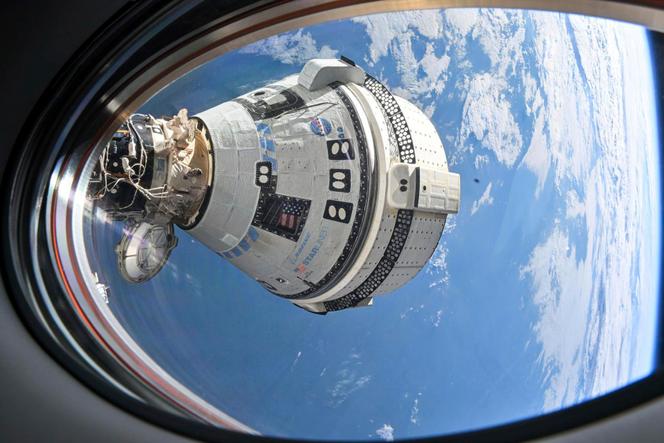


After more than two decades of trouble-free manned space missions, it was easy to forget just how sensitive the field is, and how the slightest incident can cost lives. The problems encountered by Boeing's new Starliner capsule on its first manned test flight over the past two months have reminded the American manufacturer, and with it the US space agency NASA, of this harsh reality.
Launched on June 5 with two astronauts, Barry "Butch" Wilmore and Sunita Williams, for what was supposed to be an eight- to 10-day mission, the Starliner is still hooked up to the International Space Station (ISS) two months later: In addition to minor helium leaks, the malfunction of some of the 28 thrusters used to fine-tune the craft is raising fears of problems for undocking and the return flight. At a press briefing on Wednesday, August 7, NASA finally admitted that its two astronauts were trapped in the ISS and that it was studying several options for returning them to Earth.
The background and implications of this misadventure can be better explained by briefly looking back to the 2000s. After the in-flight destruction of the shuttle Columbia and the death of its seven passengers on February 1, 2003, NASA, faced with an aging fleet of shuttles and their inordinate cost, decided to retire them one by one, with the last flight in 2011. To maintain access to the ISS, the US space agency opted to entrust the design of both crew and supply transport vessels to the private sector.
Decided under George W. Bush's second term (2004-2008), this major paradigm shift was confirmed and amplified by Barack Obama's administration. To put it simply, the US space agency became a buyer, with potential suppliers asked to submit their proposals. For manned capsules, the two successful candidates were Elon Musk's company SpaceX, with its Crew Dragon derived from its Dragon cargo ship, and Boeing, with the Starliner. In other words, a start-up that wanted to – and would – revolutionize the sector, and an established company.
But, as is often the case in space, delays piled up for both programs. In theory, the first manned flight of Starliner should have taken place... in 2017. That delay was partly due to the fact that the Americans haven't built a capsule since the Apollo program, and that safety requirements have been raised since then. For almost a decade, the US suffered the minor humiliation of not having a spacecraft capable of sending humans into orbit, and having to buy seats for space from the Russians in their outdated but highly reliable Soyuz capsules.
You have 64.47% of this article left to read. The rest is for subscribers only.
